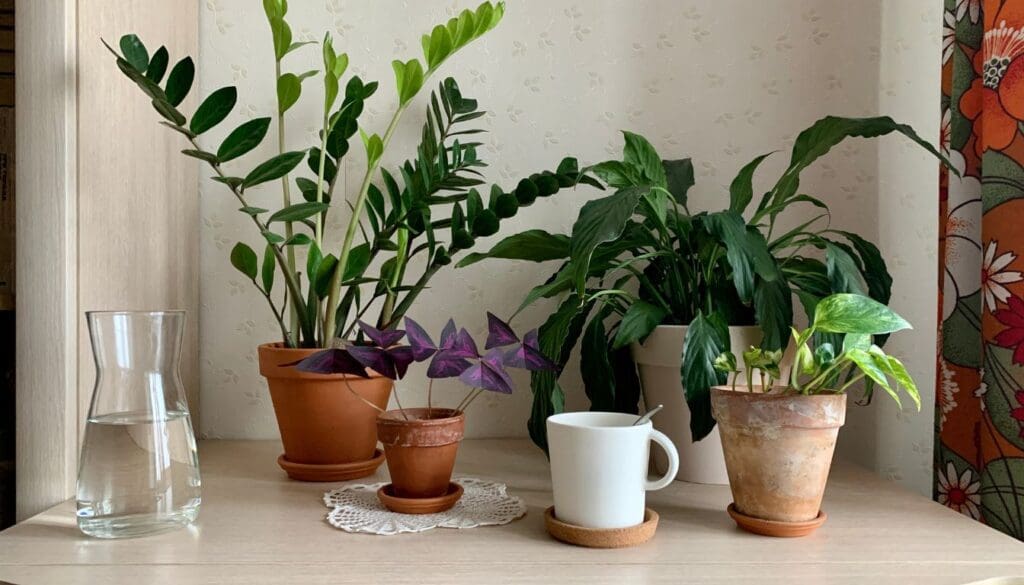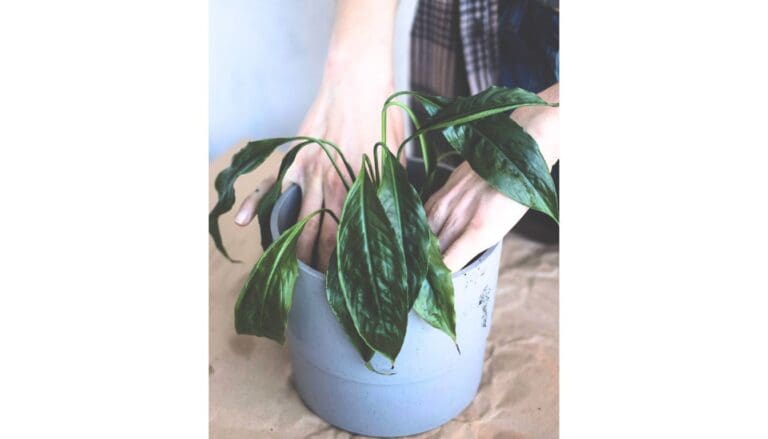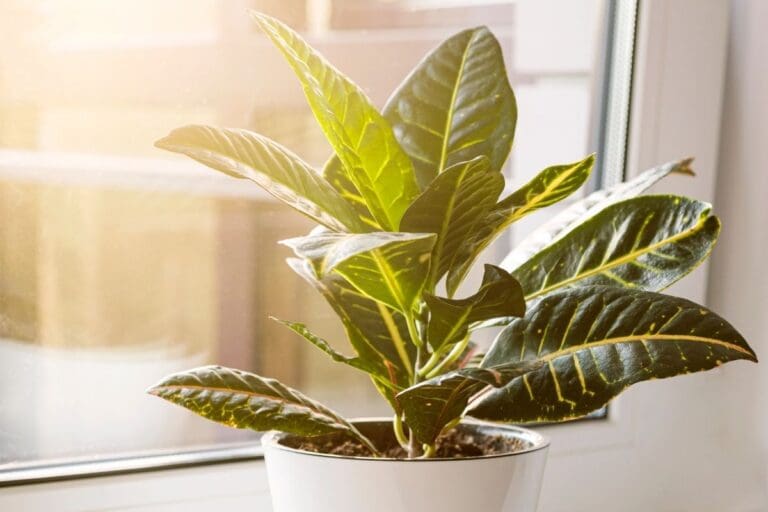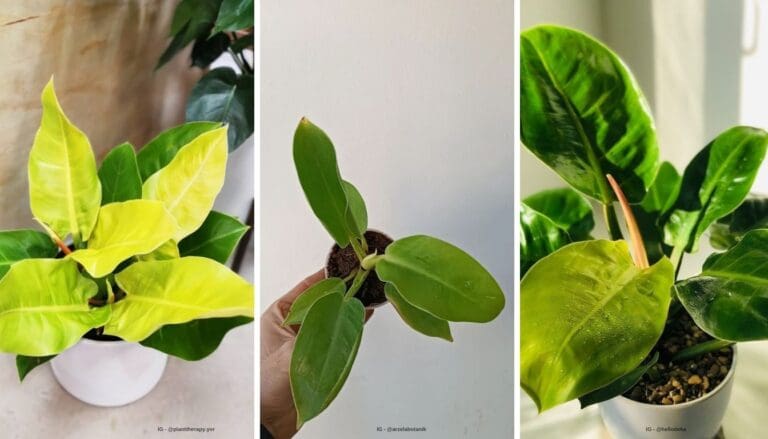Do Indoor Plants Go Dormant In The Winter?
One of the reasons indoor plant owners detest winter is because their beloved plants are pushed into dormancy. Dormancy is a natural period when plants slow their growth and begin hibernating to conserve energy.
Most indoor plants are native to tropical areas, and thus they enjoy the warmth. These plants do not like winter due to unfavorable conditions like less sunlight intensity, shorter days, low humidity, and low temperature. Thus their growth drastically reduces, and they go dormant in winter.
This article will discuss dormancy in indoor plants in winter, explaining the causes, signs, and measures to keep indoor plants comfortable during cold weather. So, keep reading.

Please note: Simplify Plants is reader-supported. Some links in the post are affiliate links and I get a commission from purchases made through links in the post.
Why do plants go dormant?
Most plants go into dormant condition because they are not happy during winters.
Most of the plants we grow in our homes belong to the tropical rainforests of the world, so when we bring them indoors, they try to acclimate themselves to the conditions of our homes.
If we want our plants to be happy, we must give them the conditions best suited for their flourishing growth.
Most indoor plants enjoy warm, humid conditions where they stay green all year round.
However, their growth is hampered since winter conditions are quite unsuitable.
So they begin to slow their growth to store more energy inside them to survive the unsuitable conditions.
Dormancy in plants growing outdoors happens more abruptly as they lose their leaves like the deciduous trees.
However, some researchers say you can reduce the impact of winters and dormancy by giving the plant optimal growing conditions, for example, increasing the amount of humidity that the plant gets, using artificial lights, and trying to keep them in a warmer area of the house.
What happens to plants when they are dormant?
Dormancy is a period when plants rest.
During this period, leaves may stop growing; for some plants, the leaves start to fall off, but the roots continue to live.
Though the plant may look dead, it is very much alive but is just in a hibernation phase.
Houseplants may not get fully dormant as in certain outdoor plants, but they begin to show certain signs of dormancy in winter.
With the fall in temperature and sunlight, the growth of new and existing foliage in the plants begins to reduce.
But this is temporary as the plant picks up with the onset of spring.
Dormancy in each plant works differently. Each of them survives in their way.
- We see some plants begin shedding their leaves to store the energy and water they collect throughout the summers.
- With the drop in temperature and sunlight, lawns and grasses begin to turn brown and stop growing.
- Seeds sometimes take months to germinate because of unsuitable weather conditions.
Different types of dormancy

Two types of dormancy happen in plants which I will discuss briefly:
Predictive dormancy
Certain plants go into dormancy even before winters have fully arrived.
Some plants have photoperiod capacity to detect how much light they are receiving and when they understand that at the onset of winters, it’s beginning to diminish.
They begin to move towards dormancy.
Consequential dormancy
This type of dormancy happens once adverse conditions have set in.
This is more common in houseplants, as they do not experience natural conditions and are protected indoors.
So once winters are fully set in, they begin to push to dormancy.
Signs that your plant has gone dormant

Here are some signs of understanding that your houseplant has gone dormant.
All the leaves begin to shed: Most plants that go into dormancy in winter begin to lose all of their leaves.
This might seem alarming to a first-time plant parent, but it is a common part of their life cycle.
Slow or no growth: Some plants show slow growth, whereas some show no signs of growth.
This is because the plants don’t focus on growth and work.
It looks like it’s dead: Sometimes, in extremely cold temperatures, the plant looks almost dead.
Though many newbie plant owners might confuse a dormant plant with a dead plant, we will discuss extensively below how to understand the difference between the two.
Do all plants always go dormant in winter?
Not necessarily. It depends on the specie of the plant.
Some plants native to tropical areas and are perennials do not necessarily go into full dormancy if you can give them the right conditions.
Certain plants belonging to the temperate zones always go dormant.
Some plants get into a deeper dormant state than other plants.
The more light, humidity and temperature a plant needs, the hardest it is to stay away from dormancy.
How to acclimate your houseplant?

In the initial days at the onset of winter, bring your plants indoors in the evening and shift them outside in the morning.
Gradually increase the time indoors, so the plant suddenly does not face the change.
You can keep them in a garage or a room where there is no outside environmental stress for the plant, and it can stay on its own until spring arrives.
If the plant is fully dormant, do not water it more than once a month.
How to tell if your plant is just dormant or dead?
Many plant owners confuse a dormant plant and a dead plant as they look similar, but if you look closely, there are a few tips to identify which is what.
The snap test
This is the most common way to recognize whether your plant is dead or just dormant.
Select a stem or a branch the size of a pencil.
Then snap the branch of the plant, and if you find the inside is green and moist wood, your plant is alive.
It’s just dormant. But if you see the inside has gotten brown, then probably it’s dead.
Root inspection
Most tuber plants with rhizomes have higher chances to revive themselves, such as alocasia, ZZ, etc., so when your plant body looks dry and shriveled on the outside, pull it outside and check its root.
If the root is alive, it will look crisp and fresh.
The scratch test
Take a knife or, with your fingernail, scratch the plant’s bark.
If it is green and fresh inside, then it is alive.
Caring for dormant houseplants

Winters are already difficult for the plants.
Thus you have to take sufficient care of them during this tough time.
1. Check your plants regularly for pests
In winter, the plants are weaker and have less strength to fight pests and bugs.
Hence, pests attack these plants more during this season.
It is important to keep an eye on your plant’s health during this season to ward off any pests.
2. Dust your plants
Because the intensity of sunlight is very low in winter, it is important that whatever light it gets, it can absorb the maximum light.
This is why the leaves of your plants must be clean so that they can photosynthesize maximum sunlight.
Clean the leaves, and do not let bugs like spider mites hide in between the leaves.
Remaining the leaves of indoor plants with a neem oil solution is recommended to keep them clean and repel bugs.
3. Water only when needed

Some plant owners need to water their plants in winter.
Their watering requirements are higher in summer, but they also need watering in winter.
You must water them whenever the soil has become dry to the touch.
If you are unsure when your plant needs water, use a moisture meter to measure the dryness of the soil.
4. Use artificial grow lights
Winters are not suitable for most plants because of the shorter day hours.
The sun’s intensity is also quite less.
This is why it is recommended to keep your indoor plants under artificial grow lights in the winter to keep them warm and give them some heat.
5. Maintain sufficient humidity
Humidity is a requirement of indoor plants as most homes have very dry air, and in winter, the dryness increases, which harms the plants and pushes them into dormancy.
Grouping your plants to create a comfortable forest for them helps in winter.
Misting the plants during day time or using humidifiers are other important ways to increase humidity.
6. Keep the plants away from drafts or heaters
If your plants are kept near the window or vents with fluctuations in temperature, move them away from those spots.
These areas will put more stress on the plant.
Many of us also keep the plants in a room with a heater with fireplaces to keep them warm, you can do that, but you must make sure that they are not close to the heating source, which might suck out the moisture even more.
7. Don’t fertilize your plants

In winter, the plant’s growth is already low and has very little energy.
Fertilizing at this time can be risky for the plants, as it might burn the roots because they remain in the soil without getting used.
8. Apply mulch
As winters approach, apply a layer of mulch all over the soil surface.
To keep the soil moist and not let it get dehydrated.
Mulching helps to lock in the moisture inside the soil.
You can mulch using organic elements like dry leaves, compost, twigs, etc.
Common houseplants that go dormant
Almost all houseplants show certain signs of dormancy, whether stunted growth or leaf drop.
While this happens, instead of discarding or neglecting the plants, give them much love and care and wait until they spring back to life.
Some of the common plants that are seen in indoor gardens that exhibit some dormancy are:
- Chinese evergreen
- Snake plants
- Pothos
- Fiddle leaf fig
- Monstera
- Aloe vera
- Philodendron
- ZZ plant
- Calathea
Reviving a dormant houseplant

It takes some time before the plant comes back from dormancy.
With the rise in temperature, longer daylight, and warmer months arriving, the plants gradually spring back to life.
Ensure that your plants get back a lot of sunlight and warmth with the declining winters.
It will eventually begin to come out of dormancy.
With the arrival of spring, bring out the plants to indirect sunlight.
Again do not make it too sudden.
First, acclimate the plant by moving it outside in the morning and returning it in the evening.
Once the plant is ready, put it outside under warm light, water it well, and fertilize it in spring to encourage the regrowth of foliage and help the plant return to its vigor.
Final words
We have thoroughly discussed the tips and tricks to help your gorgeous indoor plants survive through the winters. After reading this article, all your questions will be answered regarding how to take care of your plants in the winter.
Remember, it is no rocket science. Just take it as the resting period for your green babies. Once the temperatures rise, the plants will begin healing independently. All you need to do is to put the right care for the plants.
Do dormant plants need light?
Fully dormant houseplants can survive without light. However, most tropical plants are not fully dormant and need light to function.
At what temperature do plants go dormant?
This differs from species to species. But for most houseplants, once the temperature drops below 50 degrees combined with shorter days, the plants begin to exhibit signs of dormancy.
Should we water the dormant plants?
The watering requirements in winter get much lower than in spring and summer. However, they still need water for survival. Water only when the soil is absolutely dry to avoid root rot.
Recommended Garden Supplies
| Product Image | Our Recommended Gardening Supplies | Check Offers! |
|---|---|---|
Top Top
Top
Top
Top
Top
Top
Top
Top | rePotme Houseplant and Tropical Classic Potting Soil Mix | Check Offer On Amazon |
 Top
Top
Top
Top
Top
Top
Top
Top | Espoma Organic Indoor Plant Food | Check Offer On Amazon |
 Top
Top
Top
Top
Top
Top
Top
Top | GooingTop LED Grow Light 6000K Full Spectrum Clip Plant Growing Lamp | Check Offer On Amazon |
 Top
Top
Top
Top
Top
Top
Top
Top | Soil Moisture Meter | Check Offer On Amazon |
 Top
Top
Top
Top
Top
Top
Top
Top | Govee Hygrometer Thermometer, Bluetooth Enabled! | Check Offer On Amazon |
 Top
Top | LEVOIT Humidifiers for Large Room(Best For Plants) | Check Offer On Amazon |
 Top
Top
Top
Top
Top
Top
Top
Top | Upgraded DIY Automatic Drip Irrigation Kit, 15 Potted Houseplants Support | Check Offer On Amazon |
 Top
Top
Top
Top
Top
Top
Top
Top | Stainless Steel Heavy Duty Gardening Tool Set | Check Offer On Amazon |
 Top
Top
Top
Top
Top
Top
Top
Top | Bonide Insecticidal Soap | Check Offer On Amazon |
 Top
Top
Top
Top
Top
Top
Top
Top | Bonide 32 oz Spray Neem Oil for Organic Gardening | Check Offer On Amazon |
 Top
Top
Top
Top
Top
Top
Top
Top | Garden Safe Fungicide | Check Offer On Amazon |






